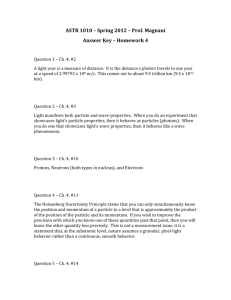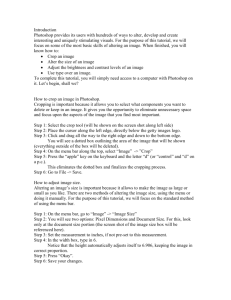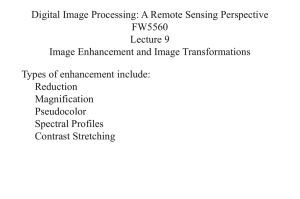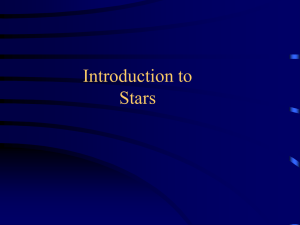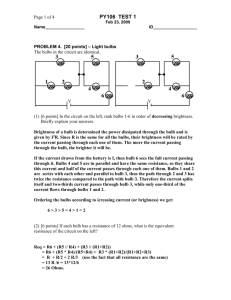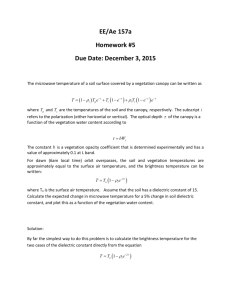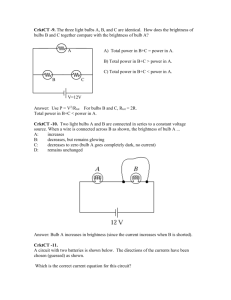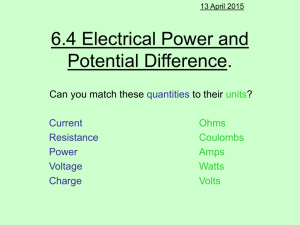Properties of Stars
advertisement
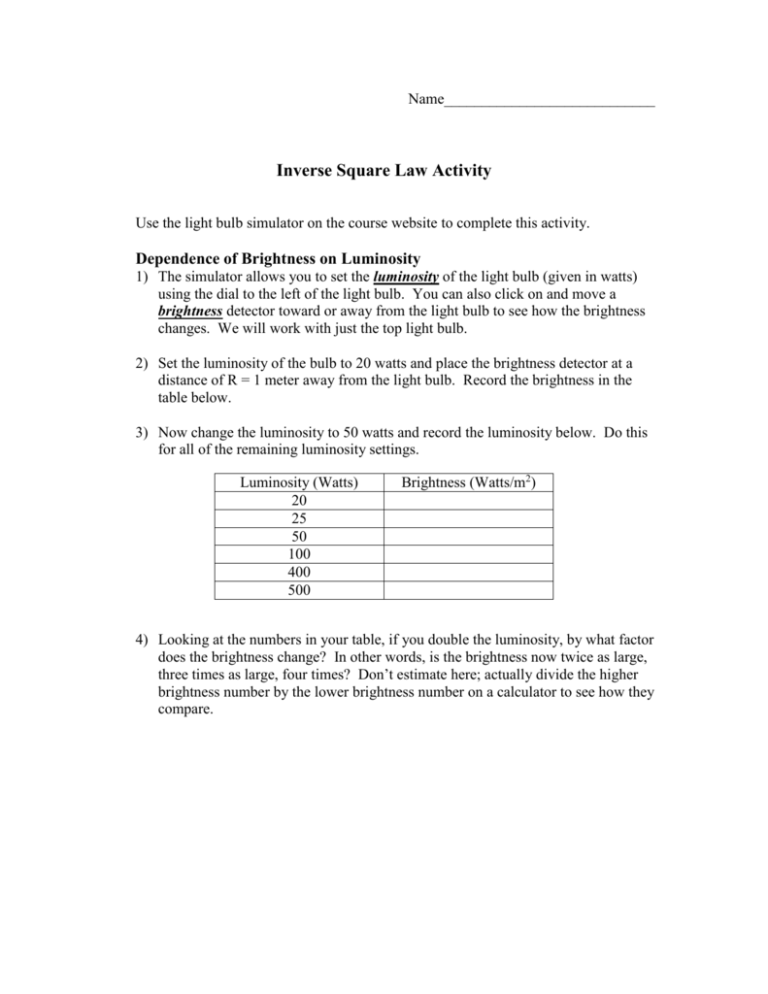
Name____________________________ Inverse Square Law Activity Use the light bulb simulator on the course website to complete this activity. Dependence of Brightness on Luminosity 1) The simulator allows you to set the luminosity of the light bulb (given in watts) using the dial to the left of the light bulb. You can also click on and move a brightness detector toward or away from the light bulb to see how the brightness changes. We will work with just the top light bulb. 2) Set the luminosity of the bulb to 20 watts and place the brightness detector at a distance of R = 1 meter away from the light bulb. Record the brightness in the table below. 3) Now change the luminosity to 50 watts and record the luminosity below. Do this for all of the remaining luminosity settings. Luminosity (Watts) 20 25 50 100 400 500 Brightness (Watts/m2) 4) Looking at the numbers in your table, if you double the luminosity, by what factor does the brightness change? In other words, is the brightness now twice as large, three times as large, four times? Don’t estimate here; actually divide the higher brightness number by the lower brightness number on a calculator to see how they compare. 5) If the luminosity is increased by a factor of four, by what factor does the brightness change? Give two different examples of this from the table. 6) If the luminosity increases by a factor of 5, by what factor does the brightness change? Give two different examples of this from the table. Dependence of Brightness on Distance 7) Now set the luminosity of the top light bulb to 100 watts, and place the brightness meter at a distance of R = 1 meter. Record the brightness in the table below. 8) Now change the distance of the detector to R = 1.5 meters and record the brightness below. Do this for all of the remaining distances in the table. Distance[R] (meters) 1.0 1.5 2.0 2.5 3.0 3.5 4.0 4.5 5.0 Brightness (Watts/m2) 9) Looking at the numbers in your table, if you double the distance, by what factor does the brightness change? In other words, is the brightness now half as large, one-third as large, one-fourth as large? Use a calculator again to determine this. 10) If the distance is increased by a factor of 3, by what factor does the brightness change? Give two different examples of this from the table. 11) If the distance increases by a factor of 4, by what factor does the brightness change? 12) If the distance increases by a factor of 5, by what factor does the brightness change? Relationship Between Brightness, Luminosity, and Distance 13) We can summarize all of the results above in one equation: B L 4R 2 where B is the brightness, L is the luminosity of the light source, and R is the distance away from the light source. You can see that the behavior you observed in the previous activities is represented by this equation. If L doubles or triples, so does the brightness. We say that B is directly proportional to L. On the other hand, if the distance (R) doubles, then the brightness decreases by a factor of four. We say that B is inversely proportional to the square of the distance. 14) Let’s try it out. Use the equation to predict what the brightness would be for a light bulb with a luminosity of 50 watts if you are standing at a distance of 3.5 meters away. Show your calculation below, then check your prediction with the simulator. 15) Now, imagine that you are standing at a distance of 2 meters from a light bulb and the brightness you measure is 9.952 watts/m2. Use the equation to determine what the luminosity of the bulb must be. Show your calculation below, then check your prediction with the simulator. 16) Now imagine that you are looking at a 100 watt light bulb and the brightness is 0.884 watts/m2. Use the equation to determine how far away from the light bulb you are standing. Show your calculation below, then check your prediction with the simulator.
